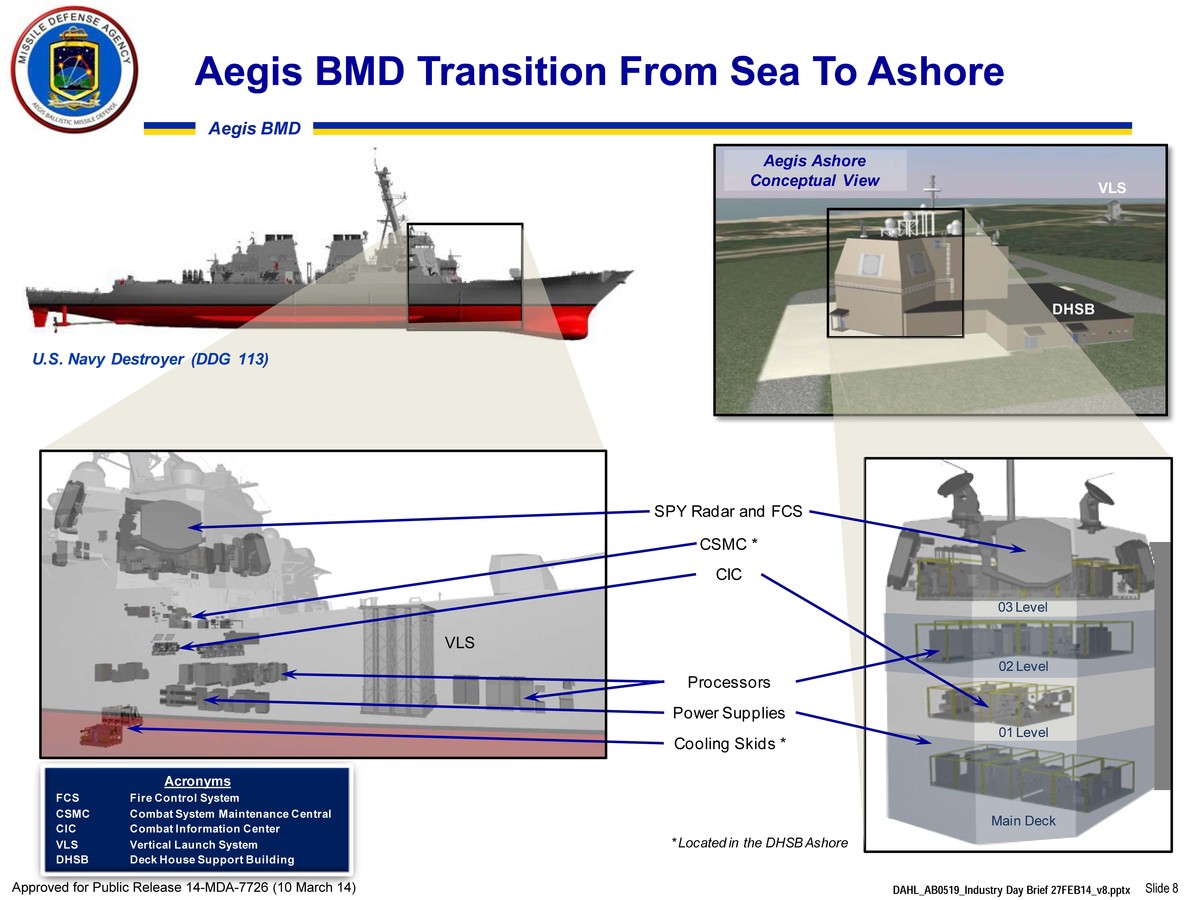
The Aegis Ashore missile defence system
The Japanese government is considering equipping floating artificial islands with missile defence systems as an alternative to the original surface-to-air Aegis Ashore missile program, which has been cancelled due to technological issues and safety concerns.
In the past, use of mega-float structures has been proposed to help with projects such as moving the US Marine Corps Air Station Futenma, in the city of Ginowan (in Okinawa Prefecture) to the proposed site of a new base in nearby Henoko, in the city of Nago. But in that instance the idea was dismissed due to a number of problems including technological hurdles.
Mega-floats are made with methods based on shipbuilding technology, in which metal boxes are joined together and launched on floats into the sea. Among the advantages of the technique is that they have much shorter construction times compared to land reclamation, they are less expensive, and they have a lower impact on the environment.
The Aegis Ashore program, which was originally set to be installed in the north-western prefecture of Akita and Yamaguchi Prefecture in west Japan, was cancelled due to concerns that the booster technology to launch the missiles could fall onto residential areas adjacent to the military facilities. Launching the missiles from floating platforms in the Sea of Japan would resolve the safety concerns associated with launching the missiles from land.
But it’s unknown from a technological perspective whether the system could withstand bad weather and other variables associated with an offshore deployment on a floating platform. Artificial islands floating on the sea can also be approached by outside parties easily and are difficult to defend. There is also the question of how to dispatch an adequate number of troops to protect the facility.
Mega-floats have been used before, including in 2011 after the Great East Japan Earthquake, when they were successfully used to temporarily store low concentrations of polluted water generated by the resultant accident at the Tokyo Electric Power Co.’s Fukushima Daiichi Nuclear Power Station. But there are very few previous instances of the technology being used in Japan.
When the now defunct Democratic Party of Japan was in power between 2009 and 2012, a plan for a floating island runway in Nago was scrapped. In the majority of cases when floating platforms have been considered for major offshore projects they have been terminated as insurmountable issues have arisen related to technological problems and high construction costs.
Moreover, according to a senior official of the Japan Self-Defence Forces: “In recent years, damage from typhoons has been getting worse. If we were to make a floating island that could greatly withstand wind and waves, it’s possible that costs would balloon.” LINK
MORE ON THE TOPIC





